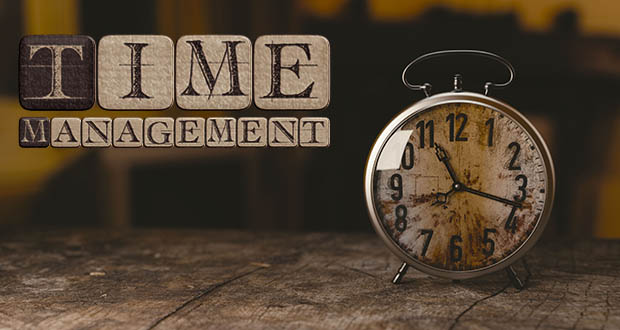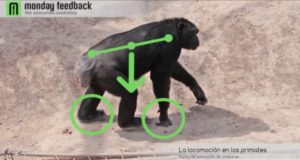One of the major problems we face when dealing with a shot, is meeting production quotas while still maintaining a good animation quality. We are often left feeling that the shot could have turned out better or worse yet, we were overdue and still, the shot didn't turn out as good as we hoped for.
Our goal is to achieve the perfect balance between the quality we are asked for and the amount of time we are given. But... How can we do it?
CALCULATE THE TIME YOU REALLY HAVE
Firstly you have to make a planning where your amount of time is perfectly distributed and balanced. For instance... say we're assigned a 150 frame shot and asked for 8 seconds a week. This means we'll have to make 1,6 seconds a day, or rather, around 38 frames a day. If our shot has 150 frames, we'll have to be done in 4 days. If we translate this to hours it would be 32 h in total.
PLAN YOUR TIME
Let's not think that planning a shot only consists of looking at the artistic part. We also need to be very aware of the time we have and how to distribute it. Only this way can we get the perfect balance between quality and production time.

In my case I have a table with the percentages of time I dedicate to each one of the stages of the process:
10 % Planning process, finding ideas and shooting videoreference.
20% Blocking the main poses and main breakdowns.
25% Work in progress.
30% Refining.
10% Overlapping elements and small details.
5% Technical procedures for the following department.
If our shot has 150 frames and we have 4 days, this means we have 32 working hours, no more no less. Translating them to the percentages we saw earlier it would look like something like this:
3 hours and 15 minutes for planning and shooting videoreference.
6 ½ hours for blocking main poses and breakdowns.
8 Work in progress.
9 ½ hours for refining.
3 hours and 15 minutes for overlapping elements and small details.
1 ½ hours for technical procedures for the next department.
We must be aware of the available time for each part of the process. Otherwise we'll dedicate more time to the initial phases and fall short when refining. This may sound rather cold or calculating, but it has to work this way.
HOW TO MANAGE YOUR TIME FOR EACH PART OF THE PROCESS
Suppose we're starting the blocking phase. In our example, we dispose of 6 ½ hours. Let's say we have to make 4 key poses and 3 breakdowns. We'll dedicate 15 minutes per pose, no more, no less. If we have 4 keys and 3 breakdowns, this means that in 1 hour and 30 minutes we'll have the first blocking version ready. But... What happens if for some reason we can't get one of the poses to work? Well the worst thing you can do is obsess over it and hit a wall. It's time to show your shot to your lead or supervisor. He'll help you with the poses we got stuck on. We'll dedicate , 1 more hour to change anything our lead asked us to, maximum, then we show it again. Normally at this point your blocking should be ready for daily.
If you notice, he have used 2 hours and 30 minutes of our total blocking time. This leaves us with 4 extra hours to make the corrections that undoubtedly, we'll be asked to do in daily. How will we distribute those 4 hours? The same way as before. Assign some time for each pose and don't get obsessed. If you don't like something, ask your lead's opinion.
When we get to the work in progress or refining phases, the outline is the same. This time we divide the shot in 50 frame chunks. If the shot has 150 frames, we'll divide it into three parts. According to our planning we have 8 hours for the work in progress, so we'll do a first pass in 3 hours 3 hours, dedicating ¾ of an hour to each part. No more no less. Once the first pass is finished, we'll launch a preview to see how it all works and dedicate another ¾ of an hour to unify, thus arriving at our initial 3 hours. Once this pass is finished we'll show the shot to the lead or supervisor.
DON'T BECOME YOUR WORST ENEMY
Like I said earlier, we can become our own worst enemy. We often obsess over a pose or a specific part of a shot. We waste a lot of time struggling to improve it and we lose track of time. Your lead or supervisor is there to help you in these moments. Pride is your worst enemy. Remember that a feature film is a collaborative endeavour where your co-workers’ support is fundamental and specially that of your leads and supervisors. They're the more experienced ones and the ones more capable of helping you.
DON'T MAKE A MOUNTAIN OUT OF A MOLEHILL
Many times we obsess over details that only we see. We're so obsessed with our shot that our eye is drawn to little details that, in most cases, will go unnoticed to others. Don't waste time with these little details. Ask your lead or supervisor to evaluate whether they're really perceptible. Another way of giving your work a fresh look is to flip your video horizontally or even vertically as some people do. The point here is to give yourself a more objective view to your senses in order to make a suitable decision.
TO WRAP IT UP
We have our shot complete with the maximum possible quality according to your production demands. Could the shot be better? Possibly, but with more time. More importantly we have delivered in time and met the quality demanded for our movie, which is the main goal. This work method will make you more objective, and not obsess over a specific part of a shot, that very often has more to do with personal taste than the quality of your work. I hope this helps you handle your next shot and that the darkest animators’ fear, production time, isn’t your artist's restraint anymore.
 MAXI DIAZ Animation blog
MAXI DIAZ Animation blog





